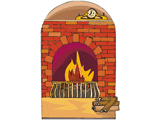Deb, you'll be happy with the Norton Critical Edition. I have one more note about Dickens' writing style that I found this morning - it helps to picture the author as he works out the novel.
"The working notes took the form of "plan sheets" for each installment. In these he worked forward and backward in planning the whole novel. He followed the following procedure:
- about ideas for future developments: things having to do with planning and decision making, writing queries to himself about which options to ttaking a sheet of approximately 7" x 9" of (pale blue) paper, he folded it at the long side horizontally in half, which he then opened, using the left half to make notes ake, what character to kill when, tags and motifs, about names, alternate possibilities in story development, etc. Often, he answered such queries later a laconic "Yes," "No," "Not yet," "Consider for next number," etc.
On the right side dealt with the substance of the chapters. Thus he uaully wrote on the top right of the sheet the name of the novel and the installment number; below the title he wrote the name of each planned chapter. In the space under each chapter he listed the most important events. The "plan sheets" varied very much, as one might expect. Some plans are very full, some remained rather empty.
Sometimes he supplemented these planning notes with supplemental notes about chronology, calculations of the ages of characters, ratio of manuscript pages to printed pages, considerations of what he had done and needed to do; plans for the end of the novel.
These Plans were succinct outlines of reminders and motifs, resumes. They are "compact and cryptic," as they were only intended for him. Apparently, he kept the notes together with his manuscripts. One might therefore say that Dickens was of necessity an outliner."
